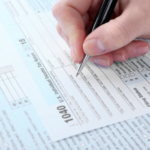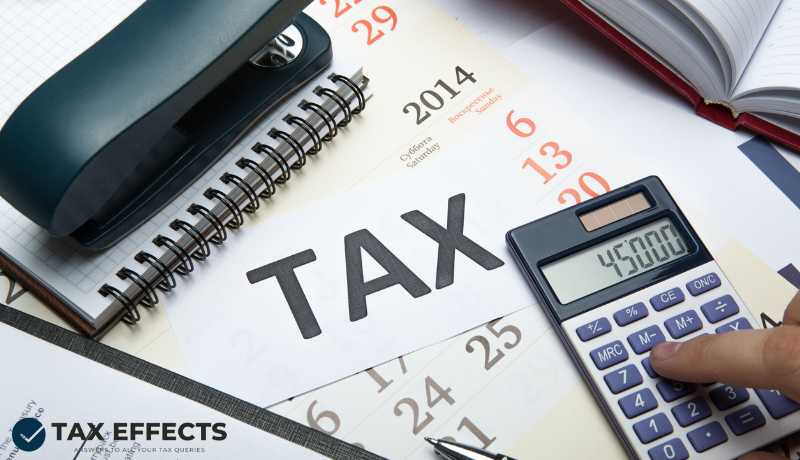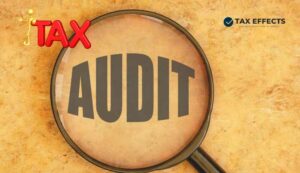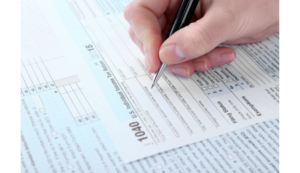Most of you must have heard about the various tax-saving instruments through which you can save a lot of taxes and at the same time save yourself a good amount for your future.
When it comes to tax saving instruments, section 80C of the income tax act, 1961 is the biggest and most important section under which we could get a chance to invest in multiple modes and consequently save taxes.
In this post, we are specifically going to discuss the major investment mentioned under section 80C through which you could help yourself to save taxes in the next assessment year 2023-24. The major modes mentioned under section 80C are as follows:
(1). Life Insurance Premium payments:
Life Insurance Plan is one of the most important investment plans in India. It ensures that one’s family is financially balanced in the case of an event of death.
The premium paid towards the purchase of a life insurance policy qualifies for deduction under section 80C up to Rs 1.5 Lakhs. Also, as per section 10(10D), income on the maturity of the policy is tax-free.
The income is tax-free if the premium paid is not more than 10% of the sum assured.In a case where the money goes to the nominee of the person insured, the same remains tax-free in the hands of the nominee.
Furthermore, the taxpayer can claim 20% of a tax deduction on the premium paid, if the policy is purchased on or before 31st March 2012. The policy should be in Taxpayer’s own name or in the name of their spouse or child.
(2). Equity Linked Saving Scheme (ELSS)-
ELSS are mutual fund investment schemes that invest a large percentage of their portfolio in equity. The fund has a mandatory lock-in period of 3 years which is the shortest among all investment projects.
Both Lumpsum & amount invested through a systematic investment plan (SIP) qualify for the deduction. Since ELSS funds invest a large amount in equity, there is always some inherent risk.
ELSS funds provide the dual benefits of capital appreciation & tax saving. It is also one of the most popular tax-saving investments among investors. They invest a minimum of 60% of their portfolio in equity & equity-linked instruments.
(3). Public Provident Fund (PPF)–
PPF has always been a popular tax-saving scheme amongst taxpayers. PPF Falls under the category of exempt-exempt-exempt status. The maximum amount eligible for deduction is Rs 1.5 lakhs.
Since PPF falls under the exempt category, the interest & maturity amount are exempt from tax.
PPF account comes with a lock-in period of 15 years & it allows investors to either withdraw the proceeds from the PPF account at the end of maturity or continue for another 5 years.
(4). Sukanya Samriddhi Yojana (SSY)-
SSY is launched by the government in 2015 as a part of the Beti Bachao Beti Padhao Campaign, especially for girls’ children.SSY comes with a lock-in period of 21 years & will mature after the expiry of 21 years.
A minimum amount of Rs 250 is required to be made every year for 15 Years.Failure to the minimum amount in a year will lead to the disconnection of the account.
To Reactivate the account, you need to pay a penalty of Rs 50 along with an original deposit of Rs 250. The eligibility criteria to open an SSY account for tax saving option are:-
– Only girl children can claim the benefit of this scheme.
– Investor must submit age proof of the daughter.
– The girl cannot be more than 10 years of age. A grace period of 1 year is provided.
(5). National Saving Certificate (NSC)-
NSC is a fixed-income investment scheme that aims at small & middle-income investors to invest & earned returns. It is considered a low-risk investment & as secure as the provident fund.
Apart from providing the benefit of tax exemption, it provides the investor with complete capital protection & guaranteed interest. Some of the features of NSC, tax saving option are:-
– You can claim a tax benefit up to Rs 1.5L under section 80C.
– You can invest as low as Rs 1,000 (or multiples of Rs 100).
– On maturity, the entire amount received by the investor will be taxable in his hands.
– The Interest earned or accrued every year on NSC is taxable every year in hands of the investor as per his income tax slab rates.
– An early exit is not available. A lock-in period of 5 years from the date of investment applies.
(6). Tax savings Fixed Deposit (FD):
FDs are considered one of the safest tax-saving schemes. It is also considered by investors as their Emergency fund in case of any emergency situation arises to them. As the interest rates are fixed, it is safer than equity investments in terms of risk & returns.
Some of the features of tax saving FD are:-
-
- A minimum lock-in period of 5 years. Premature withdrawal of FD is not available.
- Senior citizens can get a higher rate of interest on FD investment.
- In the case of a Joint Account, the primary holder can avail of the benefit of tax deduction while calculating taxable income.
- The Interest earned or accrued every year on FD is taxable every year in hands of the investor as per his income tax slab rates.
(7). Senior Citizen Savings Scheme (SCSS):
SCSS is an income tax saving scheme available to senior citizens who are residents of India.Some of the features of tax-saving SCSS are:-
-
-
- Investors can make an investment with a minimum amount of Rs 1000 & in multiples thereof. Investors can invest through cash mode also if the amount of investment is less than Rs 1 Lakh.
- A minimum lock-in period of 5 years. Premature withdrawal of SCSS is not available.
- Investors have an option to further extend the maturity period by further 3 years.
- The Interest earned or accrued every year on SCSS is taxable every year in hands of the investor as per his income tax slab rates.
-
(8). School Tuition Fees:
This tax saving option is available under section 80C in addition to other investment options like PPF, NSC, LIC, ELSS, etc. Tuition Fees paid to any registered university, college, school, or education institution qualifies for a deduction of up to Rs 1.5 lakhs.
Only tuition fees qualify for deduction to the extent amount paid under the income tax act. Any other fees like donation, development fees, etc even if paid to the institution do not qualify for the deduction.
The income tax act allows both parents to claim the deduction to the extent amount paid by them. So, if the total fee paid by the parents is Rs 1 Lakh, of which the father has paid Rs 40,000 while the mother has paid Rs 60,000, both can claim the amount individually as per the payment made by them.
(9). National Pension Scheme (NPS):
NPS has become a popular tax-saving investment product. It is available to both government & private employees. It enables the investor to build a corpus for their retirement along with a regular monthly income.
The amount invested is invested in several schemes including the equity markets.- There are two types of NPS accounts, Tier-1 & Tier-2. Tier-1 account has a lock-in period until the subscriber reaches the age of 60 years.
The contribution made by the subscriber to tier-1 is tax deductible under sections 80CCD(1) & 80CCD(1B). Tier-2 accounts are voluntary in nature which allows the subscriber to withdraw the money when they like. However, Contributions under the tier-2 account are not eligible for a tax deduction.
As per section 80CCD, an individual can claim a deduction of up to Rs 1.5 lakh by investing in NPS. Additionally, under section 80CCD(1B), an additional deduction of up to Rs 50,000 for contributions made towards NPS can be claimed.
Disclaimer: The information contained in this website is provided for informational purposes only, and should not be construed as legal/official advice on any matter. All the instructions, references, content, or documents are for educational purposes only and do not constitute legal advice. We do not accept any liabilities whatsoever for any losses caused directly or indirectly by the use/reliance of any information contained in this article or for any conclusion of the information.










1 thought on “Best tax saving instruments under section 80C for AY 2023-24”
Nice, detailed and easy to understand article. Keep up the good work.